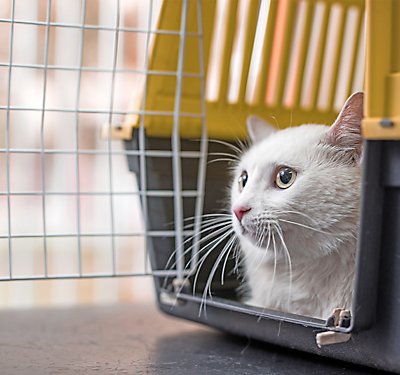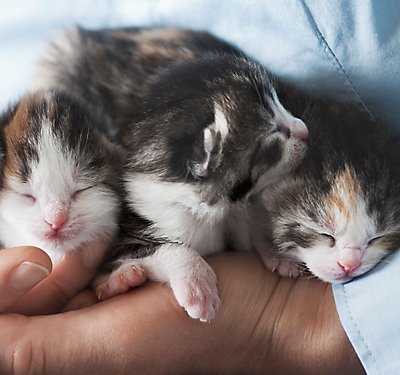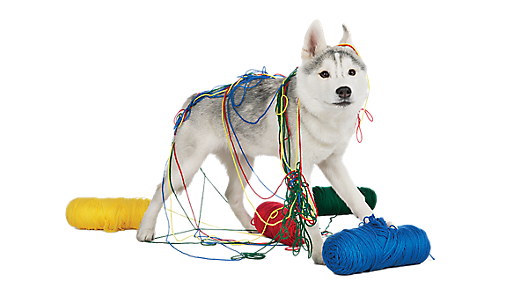
 top
top
CAT / new pets
What Do I Need to Take Care of My New Cat?
Overview
Bringing home a new cat or kitten is a big deal for both you and your new feline friend but in different ways. For you, you’re excited to be gaining a new family member! However, for the cat, the transition to a brand new home with new surroundings can cause some stress and anxiety. Because of this, you should prepare your home beforehand if possible, so you can provide your new cat or kitten with all the space and essentials they need to adjust to their new home.
Meeting the Family
The first day you bring home your new cat, make sure it’s a pleasant and calm homecoming. If you have children, make sure they understand that their new family member is a living, feeling creature who likes to be treated gently. First and foremost, you should be sure to stock up on all the essential cat supplies your cat or kitten will need, such as cat food, a cat bed, flea and tick prevention solutions, litter, and a litter box. Then, you can get started on making a cozy space for your kitty to call home. Use these helpful tips to give a warm welcome to your new pet and introduce your feline friend to the rest of the family.
A Safe Space to Retreat: Your job is to keep your new cat safe in your home and to remember that to your kitty, your familiar surroundings are completely foreign. Different cats will react differently to the experience: Some will be shy or scared, while others might jump right out of their carrier and into the action. Your new pet may even hide for a period of time until they feel more comfortable. Make sure to give them a safe space to hide in, like a cat bed or kitty hut to serve as a comfortable haven to retreat to while they get acclimated to your home.
Pet Introductions: Introducing your new pet to your other pets can be tricky. If you already have a pet, make introductions slowly. A gradual approach tends to be best. At first, it might be best to keep the two separated for a period of time before giving them any time face to face. Even after they’ve been formally introduced, you may still want to keep one pet crated when you aren’t around to supervise their interactions. Share your love equally between all your pets and you’ll be one big happy family soon enough.
What Do I Need to Take Care of My New Cat?
Though cats tend to take care of themselves pretty well, you’ll still need a variety of supplies to give them the proper care.
Feed that feline! You’ll want to choose a food that’s right for your cat’s age, energy level and any special dietary or medical concerns. But, feline nutrition can be tricky. There are a variety of different cat foods out there, so it’s best to do your research before you bring your cuddly kitty home. Whether you choose wet or dry cat food, you’ll want to start off feeding them what they’re used to eating to avoid upsetting their stomach. You can gradually transition them to a new food by mixing in a little of the new food with the old food, increasing the amount of new food each day as your cat’s tummy tolerates it. It’s also a good idea to consult with your vet before switching their food to make sure their health can withstand the diet change.
How often should you feed your new cat? If you choose dry kibble, it can sit out all day for your cat to munch. But if your cat tends to overeat, you’ll want to take the food away when it isn’t mealtime.
Cat Treats: When it comes to rewarding them, cats should only get treats that are made especially for them. Avoid feeding them table food as many human ingredients can make your kitty sick.
Scratching Posts: Scratching is a natural, instinctive behavior for cats. They scratch for all kinds of reasons, including marking territory, grooming their claws and exercise. Cats are very smart but they have no head for the cost of antiques and upholstery. You can help keep kitty from clawing your couch to pieces by providing scratching furniture and teaching them which objects are acceptable for scratching and which aren’t. Having scratching posts in each room can be extremely helpful in reducing the likelihood of your cat or kitten scratching on your furniture.
Cat Toys: Along with scratching posts, making sure your new cat has toys to play with is very important. While your new cat may be timid at first, and therefore less playful, allowing them the option to play with toys and release some energy can be very helpful.
Beds: Why Stop at One? Cats sleep a whopping 16 to 18 hours a day. Consider placing cat beds in different rooms of your home. If you want to encourage your cat to sleep in a particular area, you can even get a bed infused with catnip. There are many different cat beds available both online and in-store at PetSmart.
Litter box: Make sure you have a litter box (plus a scoop and mat) waiting for your new cat. If you have multiple cats, give them each a litter box. As for those times when your cat mistakes the rug for a restroom — you’ll need stain & odor removers and a forgiving heart. There are many different types of cat litter available both online and in-store at PetSmart.
Making Your Home Safe For Your Kitty
Look! Up in the sky! Cats like to jump and climb, so kitty-proof your vases and other wobbly breakables by stowing them where they can’t be knocked over. Not only will this keep your valuables safe, but it will keep them from falling on your floor (or, worse, head) after your curious kitty’s most recent adventure.You should also secure wires, window cords, floor-length curtains and any other potential hazards that might entangle a leaping feline.
Put Away Hazardous Plants and Chemicals: Some common houseplants are harmful to cats. Make sure they’re out of your pet’s way or relocate the plants to someone else’s home. It’s also best not to leave any chemicals, such as cleaning supplies, out on counters or tabletops where curious cats can get into them.
Observe Your Cat’s Behavior
The stress of moving to a new home with new surroundings, people and maybe even other pets can cause your cuddly kitty to act in some unexpected ways. Most of these peculiar behaviors, like hiding, are normal, but if you have any concerns about your new pet’s behaviors, consult with your veterinarian right away.
Information in this article is not intended to diagnose, treat or cure your pet and is not a substitute for veterinary care provided by a licensed veterinarian. For any medical or health-related advice concerning the care and treatment of your pet, contact your veterinarian.
































